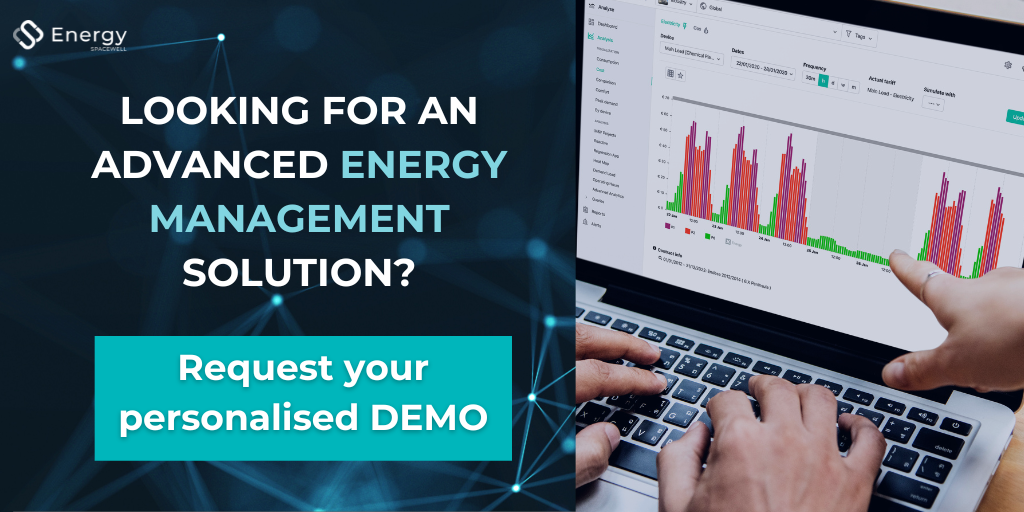Building automation systems (BAS) are becoming increasingly prevalent in commercial and industrial facilities, allowing for more efficient and effective management of building systems such as HVAC, lighting, and security. One of the key benefits of BAS is their potential to reduce energy consumption and costs, making them an important tool in the effort to promote sustainability and combat climate change.
In this article, we will explore the ways in which building automation systems impact energy consumption and how they can be optimised for maximum efficiency.
What is a Building Automation System (BAS)?
Before delving into the impact of BAS on energy consumption, it’s important to understand what these systems are and how they work. Building Automation Systems are centralised, computer-based systems that monitor and control a variety of building systems, including heating, ventilation, air conditioning, lighting, and security. They use sensors, controllers, and other devices to collect data on building performance and adjust systems in response to changing conditions. This can include things like adjusting the temperature in a room based on occupancy, turning off lights in unoccupied areas, or adjusting the ventilation system based on air quality.
How can BAS reduce Energy Consumption?
Building automation systems can have a significant impact on energy consumption in commercial and industrial buildings, reducing costs and improving sustainability. Here are a few key ways in which BAS can reduce energy consumption:
- Optimising HVAC Systems: One of the primary functions of BAS is to optimise HVAC systems, which can account for a large portion of a building’s energy consumption. By monitoring temperature and humidity levels and adjusting HVAC systems accordingly, BAS can reduce energy waste and improve comfort for occupants.
- Lighting Control: BAS can also be used to control lighting systems, turning lights off in unoccupied areas and adjusting the level of lighting in response to changing daylight levels. This can help reduce energy consumption and extend the life of light bulbs.
- Equipment Monitoring: BAS can monitor the performance of equipment such as boilers, chillers, and pumps, alerting building managers to potential issues before they become major problems. This can help prevent breakdowns that can lead to wasted energy and costly repairs.
- Occupancy Sensors: Occupancy sensors can be integrated into BAS to detect when rooms are unoccupied, allowing for automatic adjustments to temperature, lighting, and other building systems. This can help reduce energy waste and improve occupant comfort.
Optimising BAS for Maximum Efficiency
While building automation systems can be highly effective in reducing energy consumption, their impact depends on how they are designed and implemented. Let’s have a look at a few strategies for optimising BAS for maximum efficiency:
- Integration: BAS should be integrated with other building systems and technologies for maximum effectiveness. This can include things like integrating lighting and HVAC systems, as well as integrating renewable energy technologies like solar panels.
- Set Points: Set points are the desired temperature, humidity, and other environmental conditions in a building. By setting these points carefully and adjusting them as needed, building managers can ensure that energy is not being wasted on unnecessary heating, cooling, or lighting.
- Monitoring: Building automation systems should be monitored regularly to ensure that they are functioning properly and are thus optimising energy usage. This can include monitoring energy usage, equipment performance, and occupant feedback.
- Maintenance: Regular maintenance is essential for keeping building automation systems functioning at their best. This can include things like cleaning sensors, replacing batteries, and updating software.
- Training: Building managers and occupants should be trained on the use of building automation systems to ensure that they are being used effectively. This can include things like explaining how to adjust set points, how to use occupancy sensors, and how to provide feedback on system performance.
Future Advancements and Emerging Trends in Building Automation Systems
Building Automation Systems (BAS) have come a long way in improving energy efficiency and sustainability in commercial and industrial buildings. However, the field is continually evolving, driven by advancements in technology and growing environmental concerns. In this last part, let’s now explore some of the future advancements and emerging trends in building automation systems that are shaping the industry.
Internet of Things (IoT) Integration:
The integration of BAS with the IoT is changing the way buildings are managed. By connecting various devices and sensors, BAS can gather and analyse vast amounts of data in real-time. This connectivity enables more intelligent decision-making and the ability to optimise energy consumption further. For example, BAS can automatically adjust lighting and HVAC systems based on real-time occupancy data collected from IoT-enabled devices, resulting in energy savings and improved occupant comfort.
Artificial Intelligence (AI) and Machine Learning (ML):
AI and machine learning algorithms are playing a vital role in enhancing the capabilities of BAS. These technologies enable the systems to learn and adapt to building conditions, leading to more efficient and proactive control strategies. AI algorithms can analyse historical data and make predictions, allowing BAS to anticipate occupant needs and optimise energy usage accordingly. Additionally, AI-powered fault detection and diagnostics help identify equipment inefficiencies and anomalies, enabling proactive maintenance and reducing energy waste.
Energy Storage and Demand Response Integration:
With the growing adoption of renewable energy sources such as solar and wind, energy storage systems are becoming increasingly important. BAS can integrate with energy storage systems to optimise energy usage by storing excess energy during off-peak periods and utilising it during high-demand periods. Furthermore, BAS can be included in demand response programs, where buildings can reduce energy consumption during peak demand events, contributing to grid stability and potentially receiving financial incentives.
Occupant Engagement and Wellness:
The focus on occupant comfort, productivity, and wellness is gaining prominence in building design and management. BAS can play a significant role in this regard by providing personalised comfort settings for occupants. By integrating with smart devices and mobile applications, occupants can have control over their environment, adjusting temperature, lighting, and ventilation settings to their preferences. Furthermore, BAS can monitor indoor air quality, CO2 levels, and other environmental factors to ensure a healthy and productive indoor environment.
Sustainability and Green Building Certifications:
Green building certifications, such as LEED (Leadership in Energy and Environmental Design), are becoming more prevalent globally. BAS can assist in achieving and maintaining these certifications by providing the necessary data and control capabilities to meet sustainability goals.
BAS can track energy consumption, measure indoor environmental quality, and generate reports to demonstrate compliance with green building standards. This integration with certification programs encourages building owners and managers to implement energy-efficient practices and contribute to a greener future.
Edge Computing and Cloud Integration:
Edge computing refers to the processing and analysis of data at the edge of the network, closer to where it is generated. BAS can leverage edge computing capabilities to perform real-time analytics and control actions locally, reducing latency and enhancing responsiveness.
Additionally, cloud integration allows BAS to store and analyse large amounts of data over extended periods, facilitating long-term energy optimisation and performance tracking. The combination of edge computing and cloud integration provides a robust and scalable platform for BAS deployment.
As the world continues to prioritise sustainability and energy efficiency, building automation systems will play a crucial role in achieving these goals. With advancements in technology and the integration of emerging trends, BAS will become even more intelligent, proactive, and user-centric. The future holds great potential for further optimising energy consumption, improving occupant comfort, and creating smarter, greener buildings.
In conclusion, building automation systems are a valuable tool for reducing energy consumption in commercial and industrial buildings. By optimising HVAC systems, controlling lighting, monitoring equipment, and incorporating occupancy sensors, they can help reduce energy waste and improve occupant comfort.
To maximise the efficiency of building automation systems, it is essential to integrate them with other building systems, set proper set points, regularly monitor and maintain them, and provide training for building managers and occupants.
At the same time, an Energy Management System (EMS) such as the Spacewell Energy Platform (Dexma) can complement building automation systems to further improve energy efficiency. Our solution can analyse energy consumption patterns, identify areas of waste, and optimise energy usage across buildings, allowing for even greater energy savings. By utilising both BAS and EMS, commercial and industrial buildings can take a significant step towards reducing their environmental impact and promoting sustainability. If you need support in your journey toward energy efficiency, don’t hesitate to get in touch with our energy experts here.




